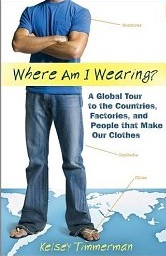 An article that appeared in the LA Times last week, and in the Chicago Tribune’s Business section today, touts a recent visit by 47 African women entrepreneurs who came to the U.S. as part of a program by the State Department aimed at helping African countries build their economies and rely less on U.S. aid.
An article that appeared in the LA Times last week, and in the Chicago Tribune’s Business section today, touts a recent visit by 47 African women entrepreneurs who came to the U.S. as part of a program by the State Department aimed at helping African countries build their economies and rely less on U.S. aid.
Having worked with women artisans in African countries directly now for several years, it’s always exciting to see any program that helps a woman develop and grow her business. Programs like these are especially useful and informative when the programs highlight specific trade agreements that can help get the products export-ready and cost less to export for the importer (for example, the article specifically covers the African Growth and Opportunity Act – or AGOA for those us of who need to know the term) but it doesn’t cover another very important trade agreement between the United States and many other countries (not specifically African countries but it does benefit those countries as well: the Generalized Systems Preference or GSP).
Most of us, as consumers, would never hear of these, or any other, trade agreements and yet they affect almost everything we buy in the United States that we import. I hope the program organizers stressed the importance of keeping up to date with those trade agreements as not only do they vary among countries, but they are among the many things any exporter needs to know to become “export-ready”.
I’ve covered this topic before on the blog, the fact the importing, much fun as it is to work directly with our artisan partners in developing countries, is not fraught with many challenges. The trade agreements and importing, in general, are among them. It really really really helps when the artisans, on their side of the pond, are as export-ready as possible, making sure they have all of their paperwork correct, organized and AVAILABLE so when it leaves their country, the country officials will let it leave the country. And, when we are bringing our shipments into the U.S., our U.S. Customs broker and freight forwarders have what they need to show U.S. Customs officials to get the green light and release our shipments.
Sound glamours, eh? Yea, it’s about as glamorous as that. But, truth be told, importing can be a lot of fun and very exciting because we really do get to see some amazing things in these countries – things we just don’t see in the U.S.
I’m proud to be an importer and work with these amazingly talented women artisans in developing countries. It’s exciting to see these programs in place and, hopefully, as they continue to grow the program and reach out to more African women entrepreneurs, we’ll see even more great things coming out of those countries!
~Megy


